In the following text, Io Carydi unveils how the rail infrastructure of North West Peloponnese, Greece can act as a synergetic field for multi-sectoral development through the mobilization of “soft infrastructures” and the appropriation of existing spatio-geographical characteristics.
The Athenian-based office iocarydi.com specializing in issues of Landscape Urbanism has been invited alongside other international firms to promote advanced thinking and design solutions for the upgrading of rail infrastructure in north Peloponnese. More specifically the project aims to develop an integrated approach of spatial and railway development in the Patras Region, Greece on the premises of a Test-Planning process coordinated by ETH Zurich, under the auspices of a joined Greek-Swiss venture, with the support of OSE (The Greek Railway Company) and under the coordination of three universities (ETH, NTUA and UPatras).
The proposal of iocarydi.com does not rely upon the optimization of a single infrastructural element (ie rail) or territorial scale (ie the city of Patras), but rather on the creation of a synthetic landscape operating across scales. It focuses on solutions that mobilize a relational approach to the urbanization processes linked to the upgrade of the rail infrastructure. This approach combines the upgrade and long-term benefits of existing natural network systems, multisectoral production opportunities found in the observational perimeter of Patras region with the possibility to re-organize the adjacent infrastructures of the rail line with distributed intermodal transport. Rail corridors and the abandoned underutilized metric line, port infrastructures, abandoned building shells are all combined with economic activities that characterize the wider landscape of Patras Region: Agriculture; Food processing and packaging; Research and knowledge economy; Tourism and finally Sustainable hydrology.
The proposed synergies in the above elements are orchestrated into the observational perimeter of the region of Patras:
Firstly, by re-activating and utilizing the existing metric line of the northwest Peloponnese as a green freight corridor which runs through major areas of agricultural production and by connecting it with the port of Patras, Aigio and Katakolo, forming a distributed intermodality for primary production. Secondly, by connecting major archeological sites along and across the coast up to Athens and the port of Piraeus via the upgraded rail line.
Via the Connection of Tourism Landscapes and the networking with Araxos airport, a “Train by boat “scenario for OSE could meet the demand for flagship archaeological sites. This thick armature furthermore defines a “Knowledge Corridor” since it serves as a catalyst for connecting major educational institutions important for the R&D hubs along the line that could feed to the primary economic sectors and especially the agro-wine industry and the accompanying processing, packaging, distribution, marketing etc. These suggested synergies, again, could create potential incentives for agricultural coops to invest in setting up novel logistic operations and participate in the investment schemes of the rail restructuring.
In the city of Patras itself, all of the above are overlaid and intensified in a main decision that drives the feasibility of the project within the choice for a bankable surface rail corridor maintaining the old track instead of an “un-bankable” underground line. This decision does not only require substantially less capital investment, but also reflects the purpose of highlighting the role of the rail corridor as a condenser of synergies: As long as the rail traffic is within acceptable levels, the rail line becomes a signifier of the restructuring of the regional economies while at the same time offering the possibility for creating an important mobility place-node at Ag. Dionysios Station and a linear urban park with urban allotments, and farmers market in the area of Agios Andreas Depot stitched to a recreational waterfront.
The surface corridor crossing the city is combined with an environmental management strategy that manipulates the hydrological cycle by harvesting and recycling drainage water. In this way not only responds to the needs for environmental management but also it provisions for varied needs such as recreation and park uses, community farmers markets, green walking etc. Such a green infrastructural approach, turns a strictly engineering project to a landscape / environmental / transportation / urban park project and makes it part of the broad service ecology of irrigation, food processing, cooling even train washing.
Facts & Credits:
Architect: iocarydi.com
Project Name: Train, by all Means!
Project Category: Urban Design // Infrastructure // Landscape Urbanism Location: Patras, Greece
Year: 2014-2015
Client: ETH University
iocarydi.com design team: I. Carydi, F. Kafantaris, N. Katsikis,
Urban Planner: prof. D.N. Karidis
Traffic Engineer: I. Nikolaides
Images: © iocarydi.com
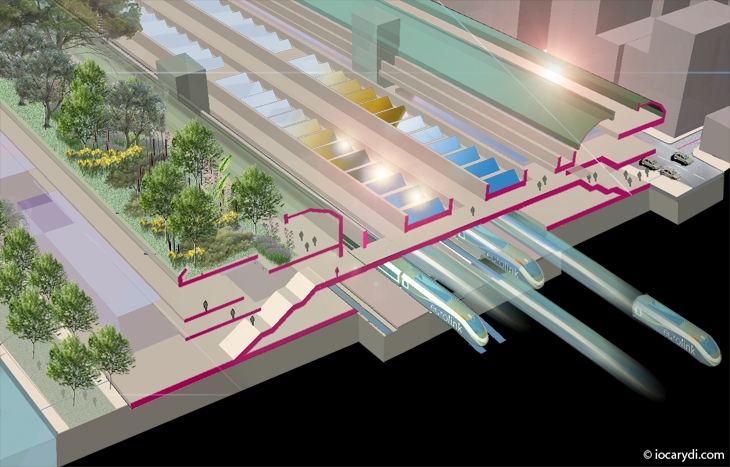 AGIOS DIONYSIOS THICKENED GROUND CONDITION FOR MULTIMODAL SERVICES & PROGRAMMATIC USES
AGIOS DIONYSIOS THICKENED GROUND CONDITION FOR MULTIMODAL SERVICES & PROGRAMMATIC USES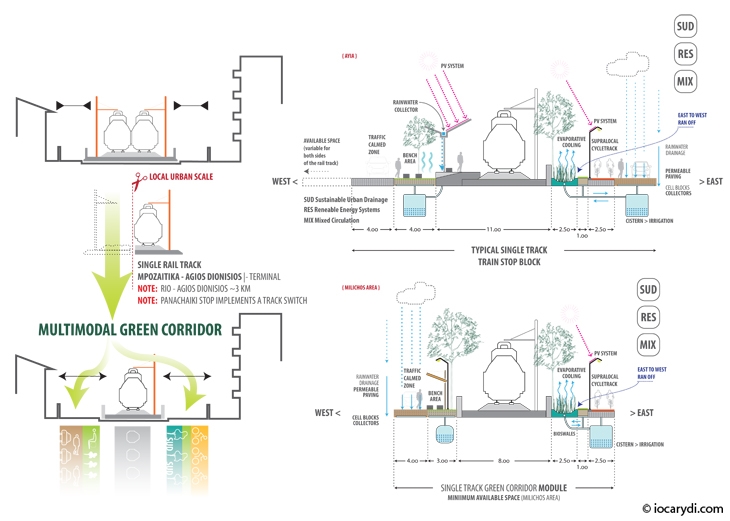 ULTIMODAL GREEN CORRIDOR ACROSS THE RAILWAY THROUGH THE CITY
ULTIMODAL GREEN CORRIDOR ACROSS THE RAILWAY THROUGH THE CITY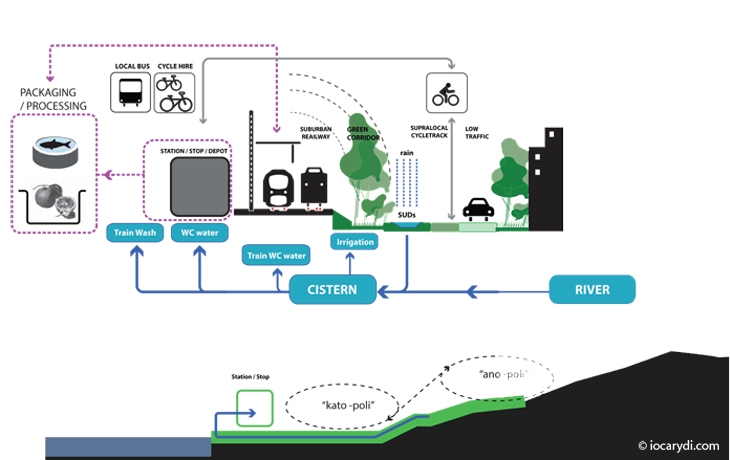 SERVICE ECOLOGIES & RAILWAY
SERVICE ECOLOGIES & RAILWAY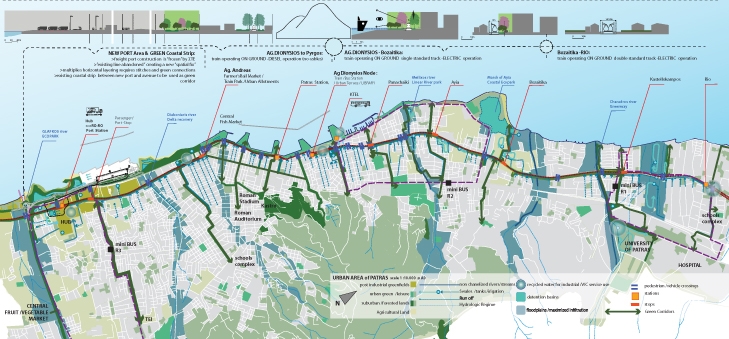 TERRITORIAL STRATEGY FOR THE CITY OF PATRAS
TERRITORIAL STRATEGY FOR THE CITY OF PATRAS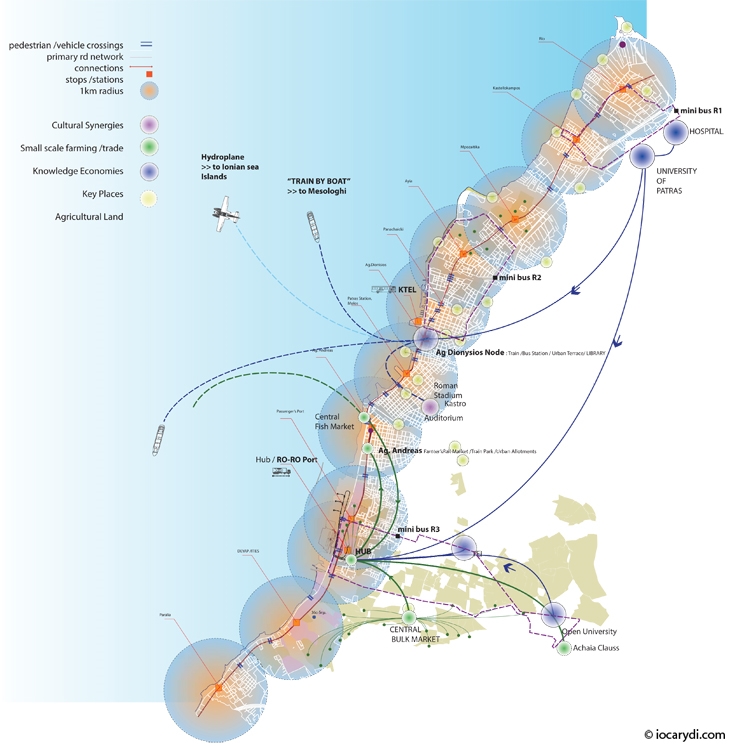 LOCAL SYNERGIES AND TRAIN SURFACE CORRIDOR
LOCAL SYNERGIES AND TRAIN SURFACE CORRIDOR SETTING SYNERGIES ON TRACK
SETTING SYNERGIES ON TRACK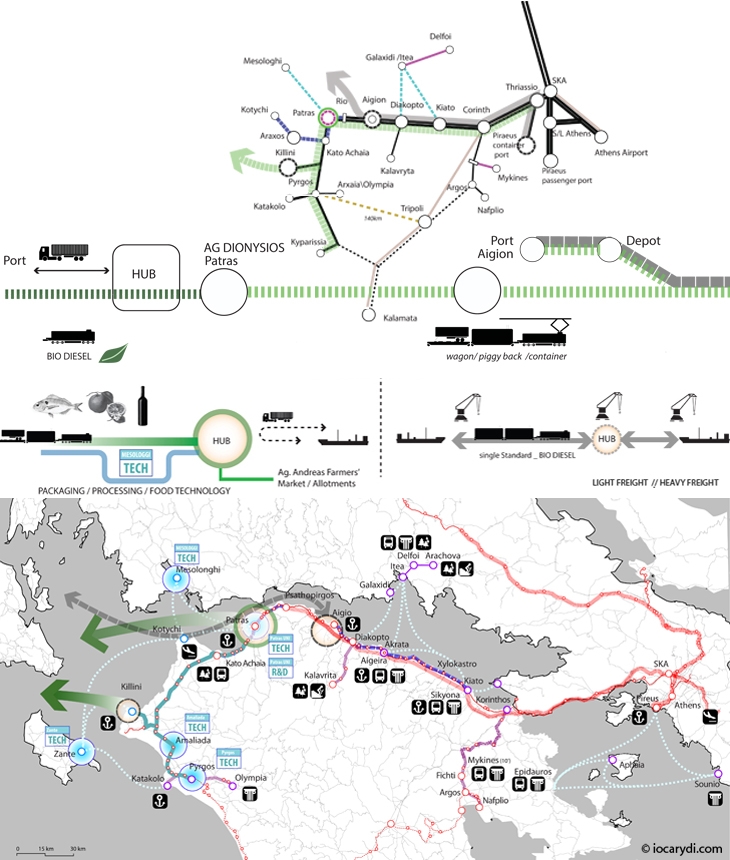 OBSERVATION PERIMETER AND DISTRIBUTED SYNERGIES
OBSERVATION PERIMETER AND DISTRIBUTED SYNERGIESREAD ALSO: BJARKE INGELS / REDESIGNING NEW YORK / VIDEO